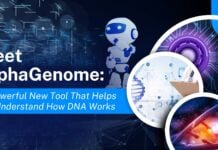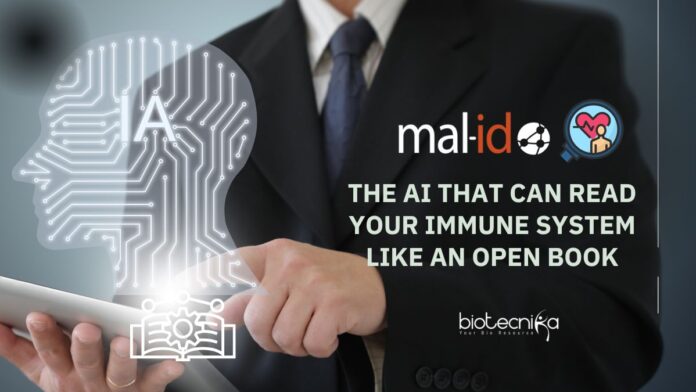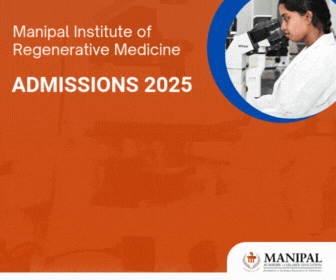Mal-ID AI Diagnostics: The AI That Can Read Your Immune System
A Single Drop of Blood, A Thousand Diagnoses: Meet Mal-ID
Alex was very anxious as he walked into the clinic. He was terrified by the idea of drawing blood for conducting various tests. But he gathered all the courage and gave a small blood sample. In the blink of an eye, he received a detailed, comprehensive result, not just one test but multiple tests.
With that small blood sample, they could diagnose a wide range of diseases, including COVID-19, HIV, and many autoimmune disorders such as lupus and type 1 diabetes. He was totally relieved as he did not have to provide any more blood samples.
Most of us face this challenge, and although it sounds like science fiction, this futuristic vision will quickly become a reality in no time. Mal-ID is an artificial intelligence (AI) tool. According to a recent Science report, scientists have developed a novel diagnostic tool that has the potential to change the way that medicine detects disease thoroughly.
What is Mal-ID? The Science Behind the Name
Mal-ID is an abbreviation for Machine Learning for Immunological Diagnosis. This instrument represents an advanced AI-driven system that consists of six intricate machine-learning models. These models are capable of analyzing millions of immune cell sequences. This methodology facilitates the accurate identification of unique immune responses, enabling rapid and precise diagnostics.
This entire process is In contrast to traditional tests that primarily aim to detect pathogens directly. After identifying the pathogens, further diagnosis will be made. However, with the advancement of technology and science, Mal-ID emphasizes the immune system’s response to infections, establishing itself as a powerful instrument for diagnosing acute and chronic illnesses.
Fundamentally, Mal-ID investigates B-cell and T-cell receptors (BCRs and TCRs), which are critical elements of the immune system that assist the body in recognizing and combating diseases. BCR sequences have demonstrated remarkable accuracy in identifying HIV and SARS-CoV-2, the virus responsible for COVID-19, while TCR sequences offer valuable insights into autoimmune disorders such as lupus and type 1 diabetes. This dual-analysis strategy significantly enhances diagnostic accuracy across a diverse array of conditions, irrespective of demographic variables.
One-Shot Sequencing: The Future of Medical Diagnostics
One of the most prominent innovative aspects of Mal-ID is its one-shot sequencing technique, which removes the necessity for various diagnostic examinations. Conventional diagnostic methods frequently require conducting individual tests for every suspected illness, a lengthy and costly process. Mal-ID, on the other hand, can evaluate various diseases simultaneously from just one blood sample, providing a comprehensive perspective of a person’s health condition.
This streamlined process eliminates the agonizing wait for multiple test results to arrive and the need for multiple invasive procedures to take samples. Instead, Mal-ID can provide a complete health overview in a single go, freeing up pressure on healthcare systems and increasing early detection rates for serious and unusual illnesses.
How It Works:
Mal-ID scans through millions of immune cell sequences to identify subtle and minute but unique immune patterns linked to different diseases. This procedure entails:
- Collecting Immune Response Information: The instrument analyzes BCRs and TCRs to identify antigens-specific reactions.
- Pattern Recognition: The AI systems analyze immune sequences from healthy people and those with diseases.
- Comprehensive Health Assessment: Through reviewing a patient’s immune response record, Mal-ID can recognize recent immunizations, setting them apart from current infections.
- Utilizing AI-powered pattern detection, Mal-ID improves the precision of medical diagnoses, positioning it as a revolutionary tool in contemporary healthcare.
BCR & TCR Analysis: Unlatching the power of the immune system for diagnosis
Why B-Cell and T-Cell Receptors Matter
B and T cells are the immune system’s foot soldiers, constantly patrolling the body for harmful invaders. Their receptors (BCRs and TCRs) contain a wealth of information about a person’s health as they evolve based on past and present infections.
Mal-ID utilizes these receptors to:
- Detect and classify infections, such as HIV and SARS-CoV-2
- Identify autoimmune disorders like lupus and type 1 diabetes
- Differentiate between sick individuals, healthy individuals, and vaccinated individuals.
- By analyzing these immune responses, Mal-ID provides insights that traditional diagnostic tests cannot.
Breaking Down the AI Model’s Analysis Process
The system evaluates six distinct representations of BCR and TCR sequence characteristics among different patient groups. This approach assists Mal-ID in the following ways:
- The system emphasizes receptors specific to antigens that are crucial for combating infections.
- Identifying autoimmune activity, especially in cases such as lupus and type 1 diabetes, is typically a difficult task. And this can be achieved with the help og Mal-ID.
- This approach ideally distinguishes between various disease conditions, allowing for accurate and swift diagnoses.
- This data-centered method is unique in the field of medicine, facilitating the timely identification of illnesses that could go undiagnosed for extended periods.
Mal-ID’s Clinical Potential: Changing the Face of Medicine
Not Just a Lab Experiment—A Peek Into the Future
While Mal-ID is still undergoing research and testing, its potential cannot be overstated. If successfully integrated into clinical practice, it could revolutionize the diagnostic landscape, providing an efficient, cost-effective, and highly accurate means of detecting diseases at an early stage.
What Makes Mal-ID AI Diagnostics a Game-Changer?
Early diagnosis: Time plays a crucial role in diagnosis and treatment. Faster diagnoses mean quicker treatment, improving patient outcomes.
All-in-One Testing: Processing several test results can be time-consuming and tasking. Instead of multiple tests, Mal-ID offers a single, comprehensive diagnostic solution.
Aid for Autoimmune Disorders: Patients with complex conditions like lupus often endure years of uncertainty before getting a confident, definitive diagnosis. But with the help of Mal-ID, that could change.
Reduced Burden on Healthcare Systems: With a streamlined approach, Mal-ID could reduce diagnostic costs and waiting times.
Challenges and Considerations: What awaits Mal-ID AI Diagnostics?
While Mal-ID’s potential is undeniable, significant hurdles remain before it can become a widespread clinical tool:
Regulatory Approvals & Ethical Considerations
Before Mal-ID can be integrated into the healthcare system, it must undergo rigorous clinical trials and secure regulatory approvals. It is essential to demonstrate safety, transparency, and data privacy. Additionally, questions surrounding patient privacy, data security, and AI ethics must be addressed.
Integration into Existing Healthcare Systems
Hospitals and global healthcare systems must be open to accepting these tools so that they can unlock their full potential as standard diagnostic tools. Medical technicians and professionals must be trained to use and interpret AI-generated results accurately and ensure a seamless healthcare infrastructure.
Over-Reliance on AI
While AI-powered tools can enhance medical decision-making, they should not replace human expertise. Doctors and researchers must work alongside AI to verify results and provide contextual medical insights that AI alone cannot offer.
Final Thoughts: A New Era in Medical Diagnostics? Is Mal-ID AI Diagnostics Worth it?
Mal-ID represents a paradigm shift in how diseases are diagnosed. It has revolutionized personalized medicine and reduced the cost of diagnosis by equipping AI and immune system analysis.
However, the meticulous journey from lab to clinic is far from over. As researchers refine their abilities and find new ways to navigate regulatory landscapes, Mal-ID is leading the way, ushering in a new dawn of diagnostics, where the whispers of disease are heard early and the symphony of health plays on, stronger than ever before.


































